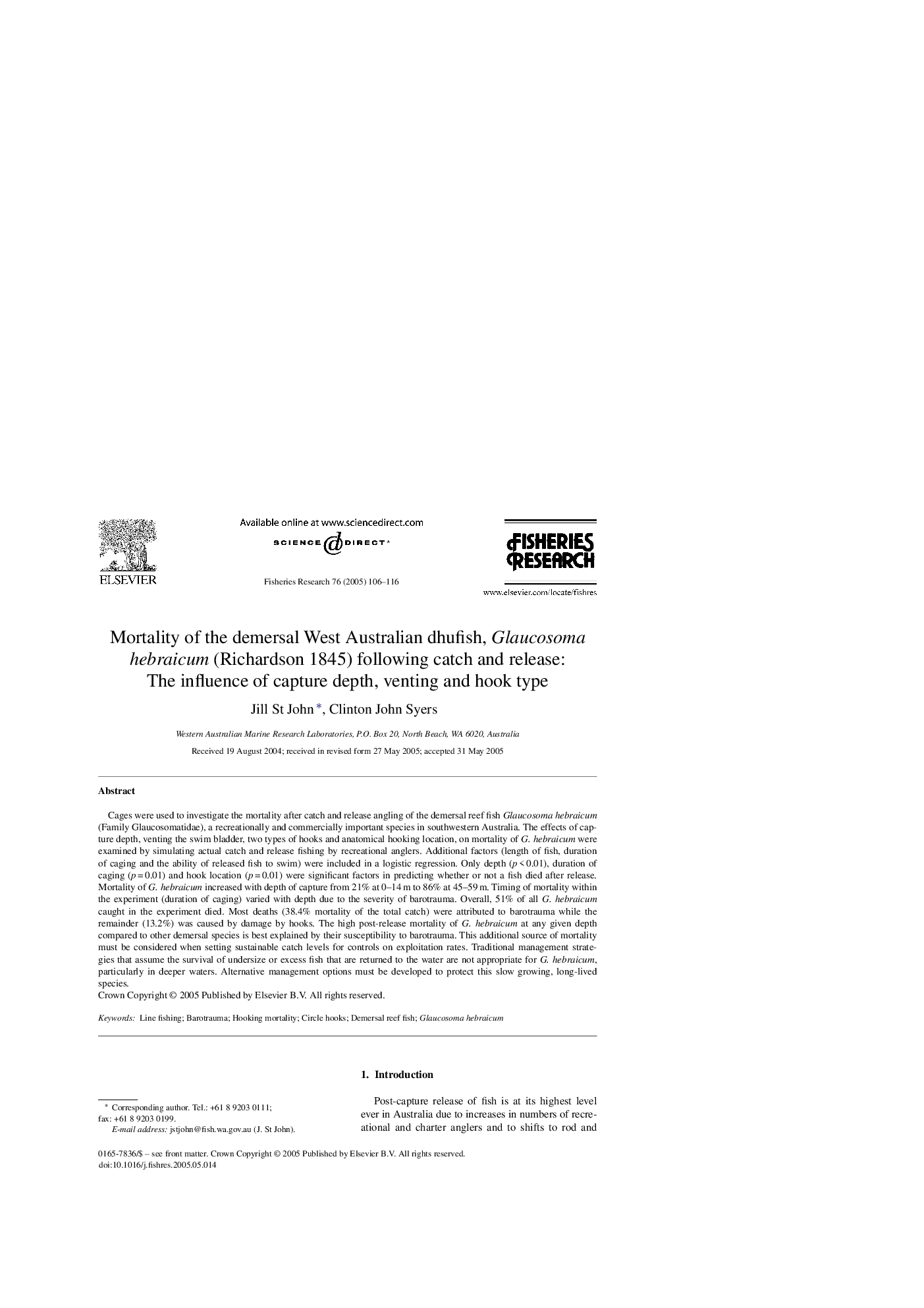| کد مقاله | کد نشریه | سال انتشار | مقاله انگلیسی | نسخه تمام متن |
|---|---|---|---|---|
| 9481644 | 1327224 | 2005 | 11 صفحه PDF | دانلود رایگان |
عنوان انگلیسی مقاله ISI
Mortality of the demersal West Australian dhufish, Glaucosoma hebraicum (Richardson 1845) following catch and release: The influence of capture depth, venting and hook type
دانلود مقاله + سفارش ترجمه
دانلود مقاله ISI انگلیسی
رایگان برای ایرانیان
موضوعات مرتبط
علوم زیستی و بیوفناوری
علوم کشاورزی و بیولوژیک
علوم آبزیان
پیش نمایش صفحه اول مقاله

چکیده انگلیسی
Cages were used to investigate the mortality after catch and release angling of the demersal reef fish Glaucosoma hebraicum (Family Glaucosomatidae), a recreationally and commercially important species in southwestern Australia. The effects of capture depth, venting the swim bladder, two types of hooks and anatomical hooking location, on mortality of G. hebraicum were examined by simulating actual catch and release fishing by recreational anglers. Additional factors (length of fish, duration of caging and the ability of released fish to swim) were included in a logistic regression. Only depth (p < 0.01), duration of caging (p = 0.01) and hook location (p = 0.01) were significant factors in predicting whether or not a fish died after release. Mortality of G. hebraicum increased with depth of capture from 21% at 0-14 m to 86% at 45-59 m. Timing of mortality within the experiment (duration of caging) varied with depth due to the severity of barotrauma. Overall, 51% of all G. hebraicum caught in the experiment died. Most deaths (38.4% mortality of the total catch) were attributed to barotrauma while the remainder (13.2%) was caused by damage by hooks. The high post-release mortality of G. hebraicum at any given depth compared to other demersal species is best explained by their susceptibility to barotrauma. This additional source of mortality must be considered when setting sustainable catch levels for controls on exploitation rates. Traditional management strategies that assume the survival of undersize or excess fish that are returned to the water are not appropriate for G. hebraicum, particularly in deeper waters. Alternative management options must be developed to protect this slow growing, long-lived species.
ناشر
Database: Elsevier - ScienceDirect (ساینس دایرکت)
Journal: Fisheries Research - Volume 76, Issue 1, October 2005, Pages 106-116
Journal: Fisheries Research - Volume 76, Issue 1, October 2005, Pages 106-116
نویسندگان
Jill St John, Clinton John Syers,